How many ways can you “make” coffee?
Did you know that espresso is just one extraction method used to produce coffee?





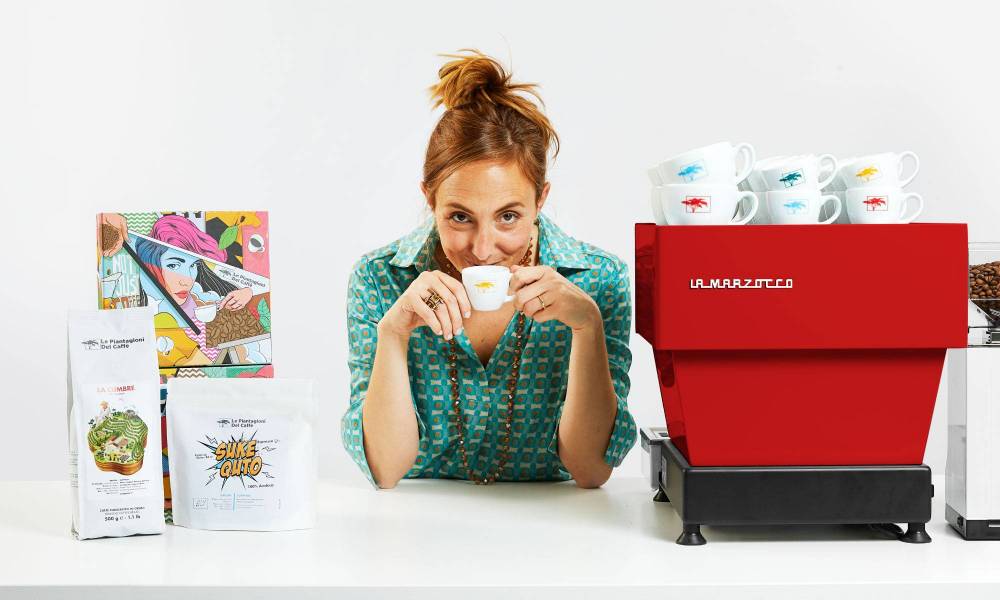
ESPRESSO
It’s a coffee-brewing method, very dear to Italians who invented it.
The technology underlying this extraction combines hot water and pressure. The first espresso machine was invented by Angelo Moriondo, who presented it at the Italian General Exposition of Turin in 1884.
It is an extraction method which, as the name implies, presumes an express preparation. The drink we obtain is characterized by a brownish-red to tiger striped cream and a velvety body.
Brew guide:
- Ground coffee dose: 7-10 gr for a single shot
- Beverage dose: 2 times the ground coffee dose
- Grinding level: medium-fine (180/250 micron)
- Temperature: 90/92°C
- Extraction time: 20-30 seconds
- Extraction method: pressure percolation
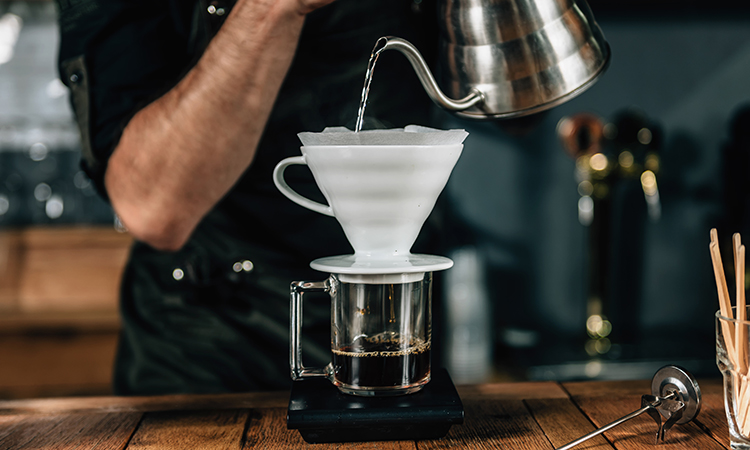
GRAVITY – POUR OVER
The gravity extraction method was invented by Melitta Bentz in 1908. It involved a porcelain cone with a flat base and 3 holes, used with a specific paper filter. It was the first percolation system to allow the coffee grounds to be separated from the liquid.
In the 1960s, Hario Glass – a Tokyo-based company that had been producing glassware for the chemical industry since 1921 – launched a homeware department and invented the V60 (Vector 60), which takes its name from the 60° angle of the dripper. Following the inclusion, in 1994, of spiral grooves on the upright sides to promote blooming (the release of CO2 from the coffee), this device has become the most widely used among enthusiasts around the world.
Brew guide:
- Brew ratio: (coffee/water) 1/16
- Dose: 30 g coffee / 500 g water
- Grind: medium (600/800 microns)
- Temperature: 89/93°C
- Extraction time: 3/5 minutes
- Extraction method: percolation






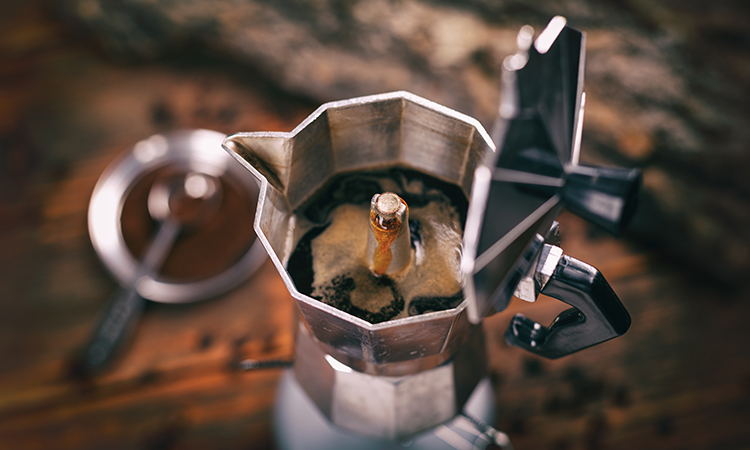
MOKA
The Moka was invented in 1933. Inspired by the workings of washing machines of that period, Alfonso Bialetti developed the device, which was to become famous worldwide.
In technical terms, the water contained in the heating vessel (the lower chamber of the moka) is heated until it comes to the boil. The water then rises into the upper section of the moka, passing through the ground coffee contained in the filter. The extracted drink is collected in the upper section, ready to be enjoyed.
Brew guide:
- Brew ratio: 1/10
- Dose: depends on the size of the moka
- Grind: medium (350/700 microns)
- Temperature: n/a
- Extraction time: approx. 2 minutes (depending on the size of the moka)
- Extraction method: pressure





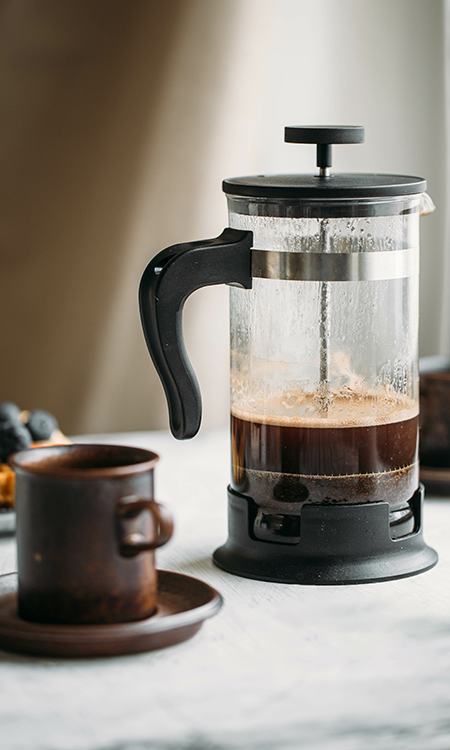
FRENCH PRESS
First patented by Meyer and Delforge in France in 1852, Attilio Calimani patented a new version in 1929. It is a plunger coffee pot, in which the ground coffee is left to infuse with hot water for the desired extraction time. By pushing down on the plunger (which contains a filter), the ground coffee is then separated from the drink and collected at the bottom of the pot.
Coffee produced using this method is often over-extracted, with a high percentage of oils and a viscous body, bitter notes and solid residues. The device is not considered suitable for achieving a clean cup.
Brew guide:
- Brew ratio: 1/17
- Dose: 15 g coffee / 250 g water
- Grind: coarse (800/1000 microns)
- Temperature: 90/93°C
- Extraction time: 5/10 minutes
- Extraction method: immersion
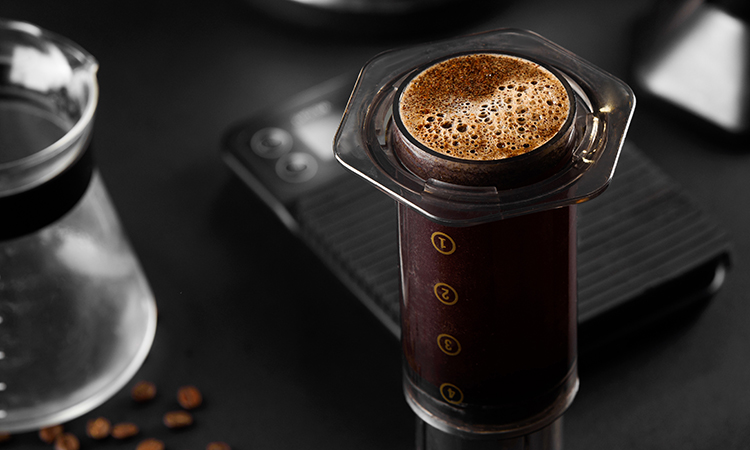
AEROPRESS
This coffee maker was invented in 2005 by Alan Adler, inventor of the Aerobie flying ring, from which it takes its name. It’s a sturdy, convenient device, which is perfectly portable and easy to clean.
It consists of 2 telescopic plastic cylinders, one of which slides into the other in the style of a piston-cylinder system. In technical terms, the device extracts the coffee by means of pressurised percolation. The extracted drink is filtered through a paper filter placed on the perforated filter cap, which screws onto the end of the outer cylinder.
A competition – known as the World Aeropress Championship – is held every year, with the winning recipes from the various years available on the Aeropress.com website.
Brew guide:
- Brew ratio: 1/13 – 1/14
- Dose: 15 g coffee / 200 g water
- Grind: medium (500/800 microns)
- Temperature: 88/93°C
- Extraction time: 2/3 minutes
- Extraction method: pressurised percolation





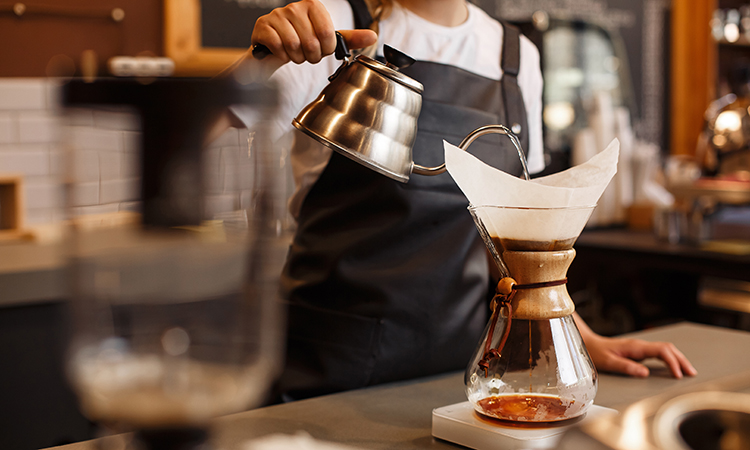
CHEMEX
The Chemex was invented in 1941 by Peter J. Schlumbohm, a German chemist living in New York. One of his original models is on display as part of the permanent collection at MoMa in New York.
Aside from being very elegant, the pot’s collar – featuring wooden rings held together with a leather tie – protects against burning.
It first appeared on the big screen in Ian Fleming’s 1957 film “From Russia with Love”, one of the earliest in the James Bond series, starring a very young Sean Connery.
In technical terms, the Chemex produces a very clean, sweet cup of coffee. Alongside the V60, it holds the title of the best pour-over extraction solution.
Brew guide:
- Brew ratio: 1/16
- Dose: 30 g coffee / 500 g water
- Grind: medium (500/800 microns)
- Temperature: 88/94°C
- Extraction time: 3/5 minutes
- Extraction method: percolation






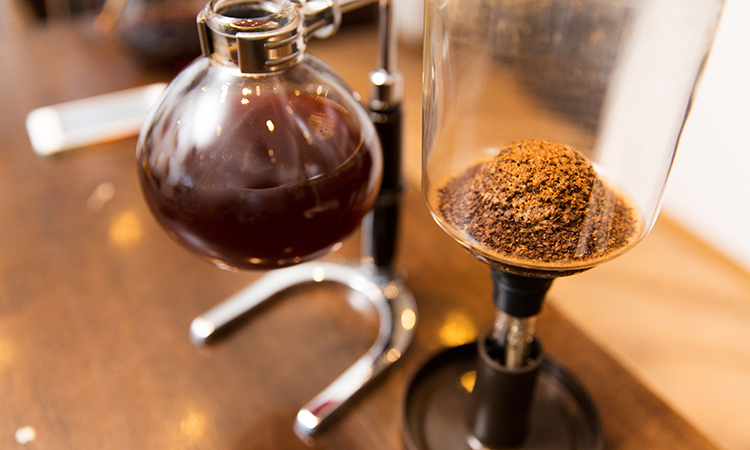
SYPHON
The Syphon, or vacuum coffee maker, is an extraction system invented in 1838 by a French woman named Jeanne Richard. The design of the device has remained largely unchanged since then. It’s a fascinating system, and very eye-catching. It is also very difficult to use, however, and incorrect use can result in significant over-extraction, leading to very bitter notes in the cup.
The Syphon consists of 2 glass chambers. The lower chamber is filled with water, which is brought to the boil over a heat source. The upper chamber holds the ground coffee, and is combined with the lower chamber to create a closed, sealed system. As the water boils, it generates steam in the lower chamber; this steam forces the water into the upper chamber, via a filter. This causes the water to mix with the coffee, to create an infusion. Once the desired infusion time has passed, the heat source is switched off and the liquid is pulled back into the lower chamber, passing through a fabric-covered metal filter.
Brew guide:
- Brew ratio: 1/14
- Dose: 25 g coffee / 330 g water
- Grind: medium (400/800 microns)
- Extraction time: 3/4 minutes
- Extraction method: vacuum
COLD BREW COFFEE
The cold extraction method has gained a cult following in recent years, but it has much older roots. In fact, it was in the early 1600s that – by adapting cold tea extraction techniques to coffee – “Kyoto-style” cold brew coffee was first produced.
This extraction style has evolved in a vast number of different ways over the years, giving rise to a whole range of different methods. Worthy of note are the Toddy, a method invented by American Todd Sympson in the 1960s, and the aesthetically impressive Tower Drip Station developed by Hario in the early 2000s.
There are two main types of cold extraction.





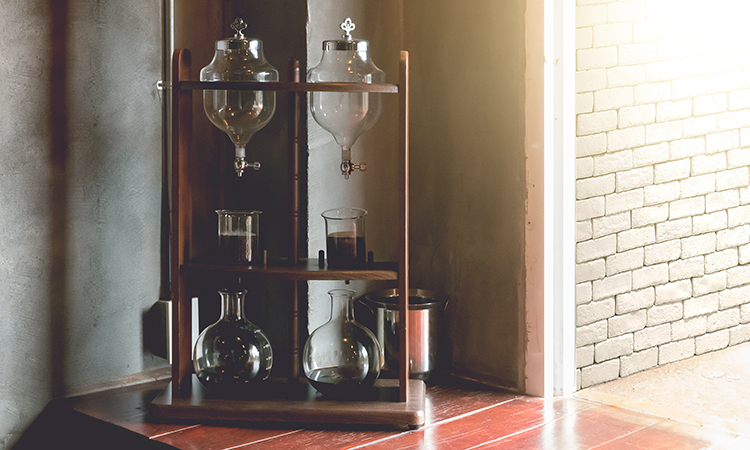
COLD DRIP
This involves a gravity-based cold percolation system, which is very impressive aesthetically. The upper section of the extraction tower holds water and ice. The central section – below the tap used to adjust the water drip speed – holds the ground coffee. The drips pass through the coffee one at a time, extracting the drink, which is collected in a container at the base of the tower.
The time required for this type of extraction ranges from a few hours to 10/12 hours, depending on the size of the towers and the speed of the water, which is usually set to approximately one drip per second.
Brew guide:
- Brew ratio: 1/12
- Dose: 70 g coffee / 900 g water
- Grind: coarse (800/1100 microns)
- Temperature: 1/4°C
- Extraction time: 4/8 hours
- Water speed: 1 drip every 1/2 seconds






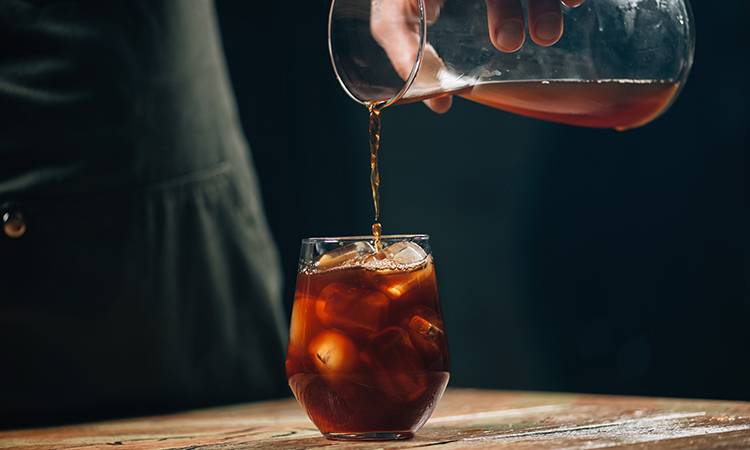
COLD BREW
This is the method used to obtain true cold brew coffee. The ground coffee is immersed in room-temperature or, ideally, cold water. Infusion time ranges from 12 to 24 hours, depending on various factors. These include the temperature of the space where the container of coffee is left to infuse.
For a more controllable result, and to prevent oxidation, the container should be covered and placed in the fridge to infuse. The resulting drink is very sweet, and less acidic than coffee produced using hot extraction methods.
Cold brew coffee can be served straight with ice, or mixed with milk, plant-based drinks or tonic water. It can also be used as a base for nitro cold brew coffee, which involves infusing the drink with gas, such as nitrogen, or a mix of nitrogen and CO2.
Brew guide:
- Brew ratio (ready to drink): 1/16
- Dose: 60 g coffee / 1000 g water
- Grind: coarse (900/1200 microns)
- Temperature: 1/4°C
- Extraction time: 12/24 hours (in the fridge)




